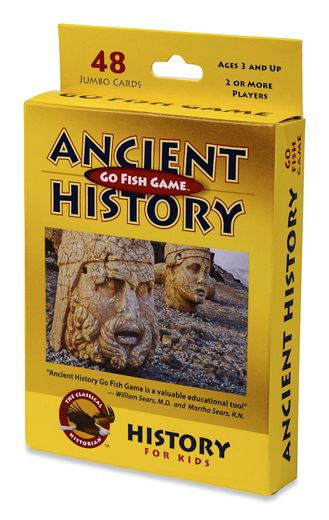History is our favorite subject! And by no coincidence, it’s also the one we spend the most time on.
Mystery of History is our main curriculum and a springboard for diving in deep. It provides a very accessible, chronological journey from Creation on, and I love the integration of “biblical” and “world” history, because, really, it’s all history; it’s all His-story.
The writing is conversational and can be used for students from kinder to high school. This means that the whole family can learn together! At the end of each lesson, there are suggested activities broken up by age range, for a more customized learning experience.
Mondays and Wednesdays are our history days, and depending on the subject covered and how deep we want to dig, we spend anywhere from 30 minutes to 3 hours on our learning.
So, what does this look like for our family?
Typically, we gather around the table and I read the short Mystery of History lesson. We may or may not do the suggested activity that accompanies.
If the subject matter covers biblical text, we read the suggested verses, and the surrounding verses for a better understanding of context. (I use the MacArthur Study Bible because inevitably, questions come up, and the study notes are helpful). If I’m behind on housework, we turn on the audio Bible.
While listening to the Bible, art journals are being drawn in. This keeps hands busy and minimizes wiggles and distractions. It will also provide a wonderful, tangible memory of our most precious school time.
To provide a good background and knowledge of ancient biblical history, I read aloud from my old college textbook, Encountering The Old Testament. Chapters are broken up by OT sections and then books, so that each section and each book of the Old Testament has its overarching themes, location, main characters, issues, theorized dates, archeological evidences, and issues laid out. The material is intellectually weighty, but I’ve found that if I read with enthusiasm, engage my children, ask questions and reward correct or thoughtful answers, they grasp SO much! I highly recommend this book, or a similar one!
One of the many perks of homeschooling is being able to really learn about a subject and to enjoy that learning. In order to accomplish this, I pull tons of resources to spice up the curriculum.
Used books are hugely helpful for this. We especially love Eye Witness books for their visual appeal. Our Student Bible Atlas is another great visual. Historical fiction adds yet another dimension to our learning. Whatever our particular Mystery of History topic, I try to supplement with an additional book or two.
Answers in Genesis has tons of great, free articles and videos on science and historical evidence and we use their site often (www.answersingenesis.org).
YouTube, Netflix, and Amazon Prime also supply videos on historic topics, but proceed with caution and use discernment.
Pinterest provides a plethora of craft and activity inspiration for me. My kiddos are super hands-on and I find that whatever we build, act out, create, or play becomes committed to memory. I pin ideas and then, when the time comes, tweak projects to my own liking.
We’ve built our own Tower of Babel out of toilet paper tubes (see photo below), Stonehenge of wafer cookies, a ziggurat of Legos… While we create, our
discussion is on the history. We look at pictures and read about whatever we are making. This provides another layer for learning and it’s fun!
I prefer delight over memorization, and never require memorizing dates or facts. (In fact, the only memorizing we do is of Scripture). I do want to solidify concepts though and a couple products I recently found help with just that.
The Classical Historian’s http://www.classicalhistorian.com Ancient History card game covers famous historic figures, landmarks, locations, and people groups. What a fun way to review facts! They also have an American History and Bible History game.
Asmodee http://www.asmodee.com has another neat card game called Timeline. Each card depicts a person or event from history (Old Earth, Evolutionary view, but we deal with it) on one side, and again on the flip side, this time with the (assumed) date. There are various ways to play, but we enjoy trying to put them in order without looking at the dates.
If it was up to me, we would only do history all day, every day!





